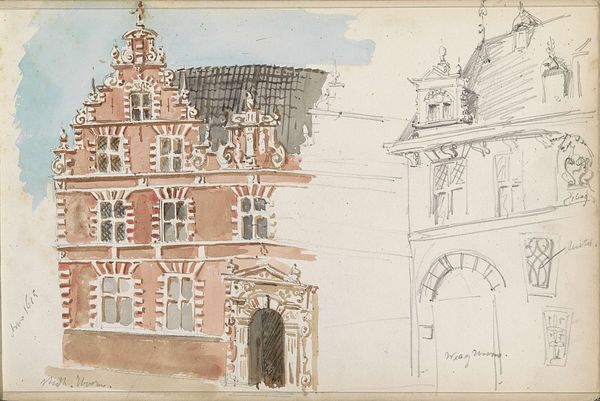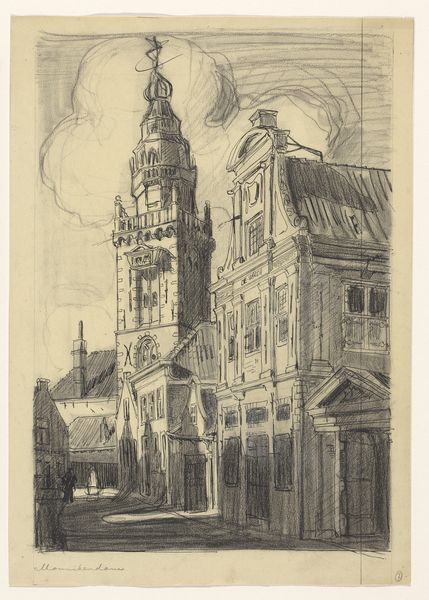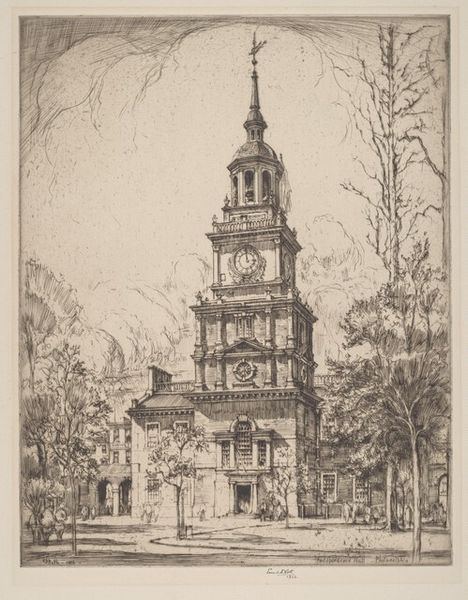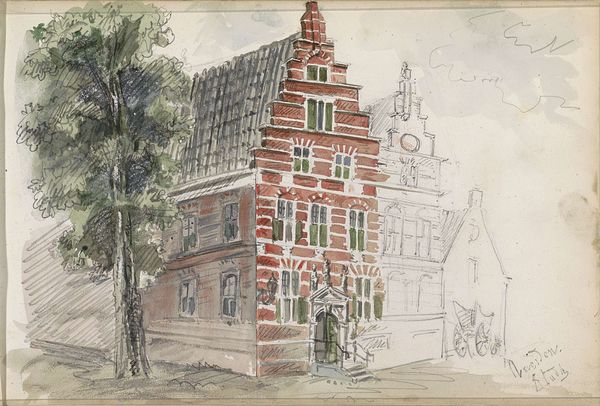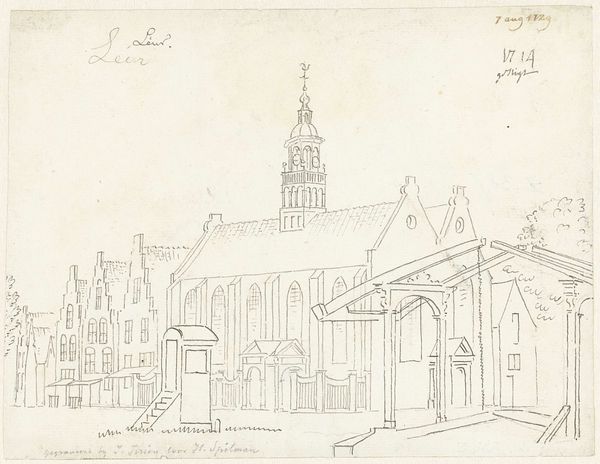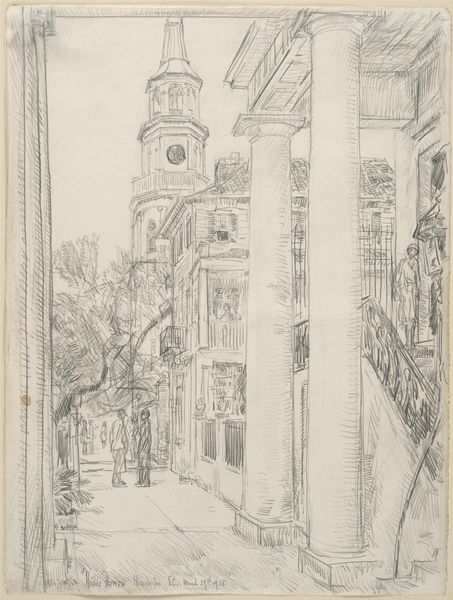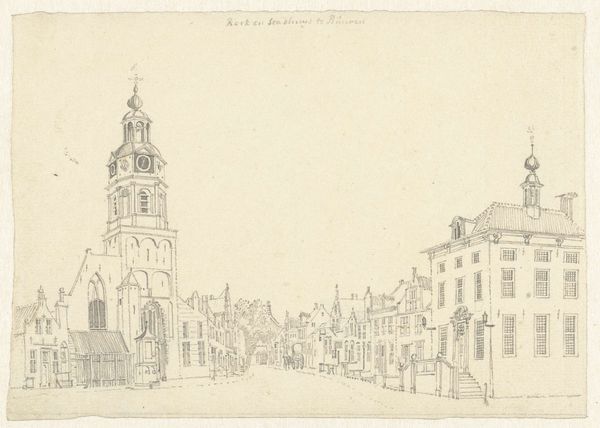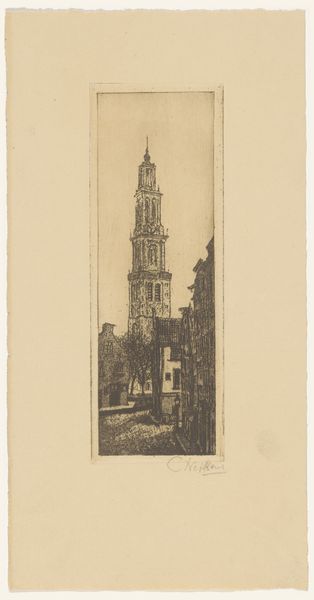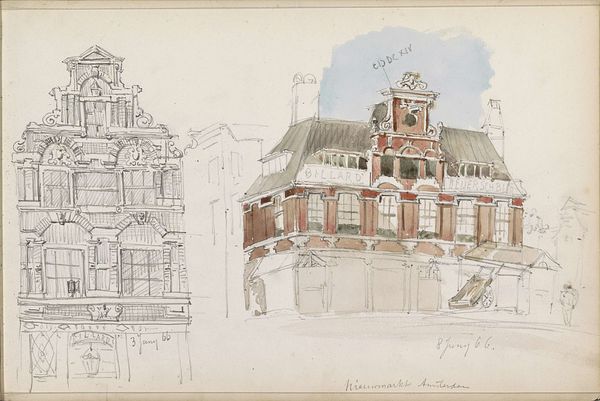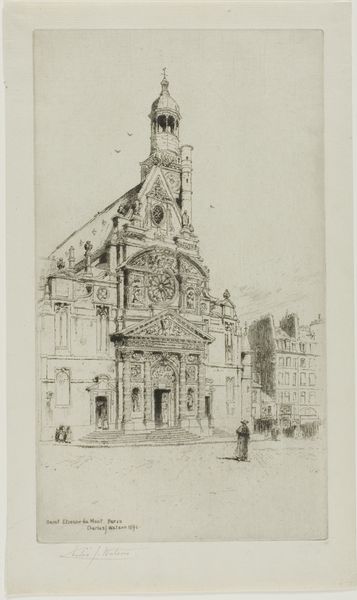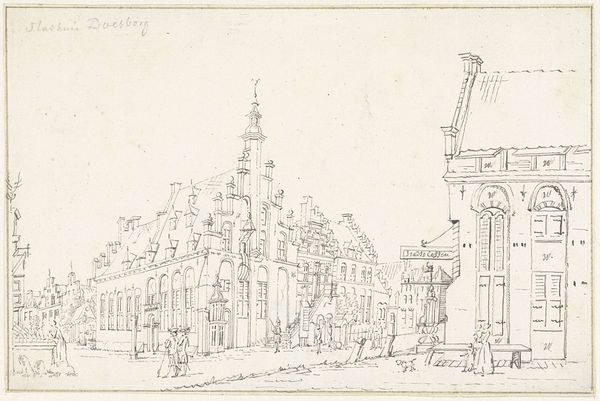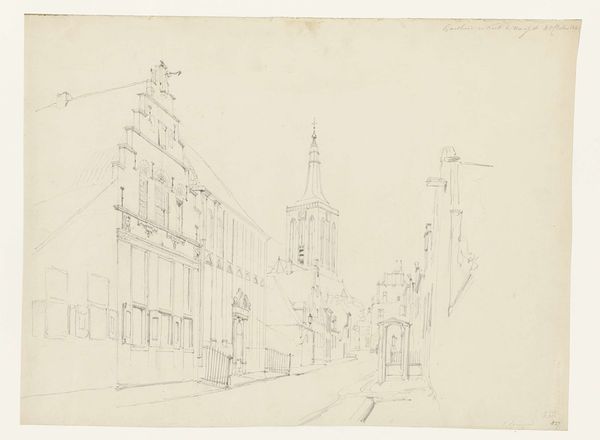
Toren van de Zuiderkerk te Amsterdam en een gebouw bij de Grote Kerk te Alkmaar 1865
0:00
0:00
drawing, watercolor
#
drawing
#
landscape
#
watercolor
#
cityscape
#
watercolour illustration
Copyright: Rijks Museum: Open Domain
Curator: Let’s turn our attention to this watercolour drawing by Isaac Gosschalk, created around 1865. It’s titled *Tower of the Zuiderkerk in Amsterdam and a Building near the Grote Kerk in Alkmaar*. Editor: There's a whimsical quality that grabs me, despite the rigid architectural subject. The muted colours and sketched lines feel simultaneously precise and dreamlike, like faded memories of place. Curator: It's interesting to consider the purpose behind pairing these two structures from different cities, Amsterdam and Alkmaar, onto one page. It's almost as if Gosschalk is using the composition to explore distinct aspects of Dutch urban identity in the mid-19th century. These architectural drawings, like photographs of the same time, reveal much about a burgeoning national consciousness. Editor: Right, I’m seeing now how the placement can encourage comparison. The church tower on the left stands in contrast to the building on the right, highlighting the varied design elements and urban experiences in the Netherlands during this period. Looking at that church tower now through the context of secularisation—is it more assertion or memorialization? And I wonder if there are gender implications embedded in representing architectural subjects like these, perhaps a certain mode of viewership coded male in its fixity and detached surveying. Curator: Absolutely, this resonates. Furthermore, let’s note Gosschalk’s technique: his confident application of colour versus the sparser line work hints to me that perhaps this work functions both as documentary record and a kind of proto-touristic vision of Amsterdam and Alkmaar. Editor: I agree. There’s a strong feeling of presenting something deliberately to an audience, an outsider. But consider how architectural illustrations, then and now, play a part in shaping power dynamics – defining who has the ability to define history. It invites us to engage critically with questions of representation and cultural authority. Curator: Indeed. This dual portrait encourages viewers to interpret cityscapes, not merely as they exist, but to analyze how those urban landscapes mediate identity. Editor: It challenges viewers to think about the broader societal and political meanings, to ask hard questions of history. Curator: Gosschalk delivers more than picturesque city scenes; it's an act of imagining communal narratives in the language of design and space. Editor: I now appreciate this watercolor much more now, for the ways in which its architectural themes touch so deftly on wider conversations about place and selfhood.
Comments
No comments
Be the first to comment and join the conversation on the ultimate creative platform.
